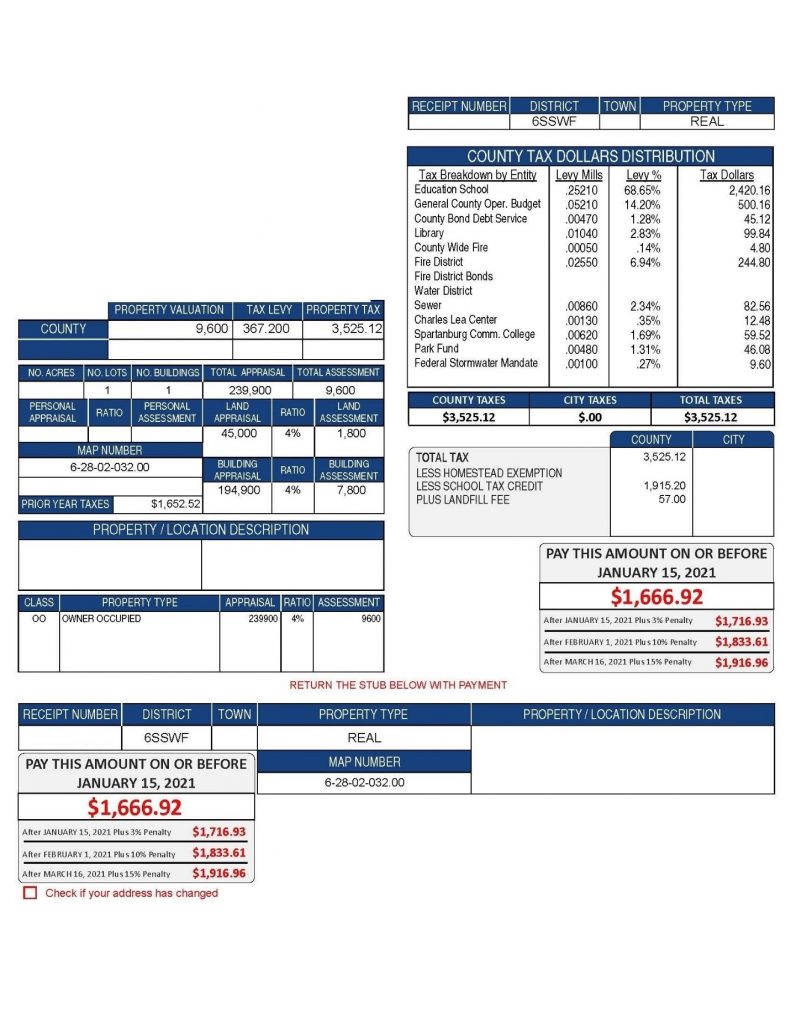When you receive your property tax bills from your local government, do you understand the breakdown of the amount owed? Whether you pay taxes on a primary or rental house, motor vehicle, or even a business, it helps to understand your county’s tax ratios and other factors that affect your tax bill. Last month, we took a deeper look at how to read utility bills. Now, it’s time to explore property taxes, how they’re calculated, and some common terms you might see on your property tax notice.
What are property taxes?
Simply put, property taxes are fees paid by property owners. Local governments, with assistance from the state’s Department of Revenue (DOR), administer and collect these taxes, which are major sources of income used to fund important community services and items. This includes public school systems, libraries, parks, services like police, fire departments, and EMS as well as infrastructure items like roads, water, and sewers.
Property is typically grouped into two categories: real and personal. Real property, which is often referred to as real estate, includes land and any buildings, structures, or improvements on the land. Personal property includes things that are moveable and have value like mobile homes, vehicles, boats, motorcycles, airplanes, and items used in businesses, such as furniture and equipment.
How are property taxes calculated?
- Real property, or real estate, taxes are calculated based on the assessed value of the property, any qualified exemptions, and the property tax rate. In most areas, the assessed value is decided annually and is the fair market value of the property. In others, the fair market value is multiplied by an assessment ratio to determine the assessed value. The property tax rate, also referred to as a multiplier or millage rate, is a percentage that is multiplied by the assessed value to determine your tax bill. The millage rate is the amount per every $1,000 of a property’s assessed value. Millage rates vary because they depend on the geographical area of the property. Each public service has its own rate, and the taxes you owe for each of them are totaled to determine your property tax bill.
Check out this example:
$150,000 (fair market value)
x .04% (municipality’s assessment ratio)
= $6,000 (assessed value)
x 0.1106 (total millage rate)
= $663.60 (total property tax due)
- Personal property taxes depend on the presiding local government’s tax rate as well as the assessed value of the item and are usually calculated annually, similar to real property taxes.
Let’s take a look at a common personal property item – vehicles. The DOR for each state prepares a manual of makes and models of vehicles for county auditors to use when creating tax bills. To determine the assessed value for a personal vehicle, the value is multiplied by the assessment ratio for the current year. Then, the millage rate is multiplied by the assessed value.
Reading your property tax bill
Similar to utility bills, property tax bills are often customized and printed to fit the needs of the local government issuing them.
Using the real property tax bill example below, here are some common terms you might see on your notice:
- District: Tax district where the property is located.
- Property Type: Defines the property type as Real or Personal property plus the classification, such as owner-occupied, commercial/rental, manufacturing, utility, etc.
- Tax Levy: Total of all the millages levied by the taxing districts that encompass a particular property, including water districts, cities, the county, and schools.
- Property Tax: Total tax dollars before any exemptions are applied.
- Total Appraisal: Total appraisal (fair market value) of the land and building combined.
- Total Assessment: Total assessment value of the land and building combined. This is calculated by multiplying the appraisal value by the ratio.
- Ratio or Assessment Percent: Percentage at which the property’s value is taxed.
- Map Number: The tax map the property is located on. These differ by location because each county divides their parcels into tax maps.
- County Tax Dollars Distribution or Mills: Table shows the millage rates (also called Levy Mills) for each public service entity and breaks down how tax dollars are being spent for their services.
- Exemptions: These are portions of the tax amount that do not have to be paid either due to the property being a certain type (those owned by religious organizations or government bodies are exempted from all property taxes) or the owner’s status (veterans, those with disabilities, and seniors are exempted from a specific amount). Homestead Exemption and School Tax Credit are listed as exemptions for the property owner on our example.
- Total Tax: Total taxes due after subtracting the eligible exemptions.






